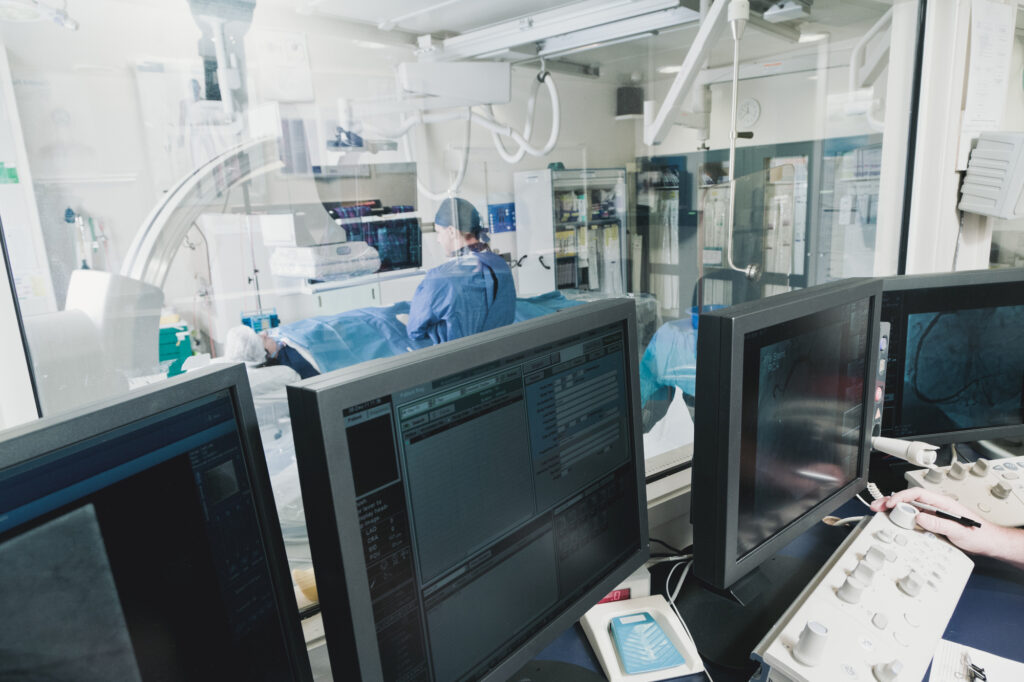
How to avoid staff sentiment of “nothing works like it’s supposed to.”
Low visibility tech that fits so seamlessly into a workflow, we don’t know it’s there until it tells us it is. Tech that actually saves clinical workers time and allows them to focus on patients, could it exist?
Absolutely. There are so many systems healthcare is reliant upon, when they fail to connect, big problems arise that will have a big impact on clinical workers. This can be such a problem that many clinical areas within hospitals will dedicate a person to check information is flowing where its supposed to. They are not IT, they are patient care professionals taking time to check these systems because they know the problems that arise when patient information doesn’t flow.
Consider a Cardiac Catheterization Lab, the simplest lab might have 3 different systems, the most complex, maybe 10 or more. A typical solution to checking systems within a lab:
- Everyday, or every week, a Cath Technician or Nurse may spend 3 – 5 hours checking reports to make sure they went to the EHR, and images to make sure they went from the local system to the PACS/VNA/EHR/DICOM. At best any interruption in transfer is caught before the patient leaves the procedure area, at worst, it is not caught until someone is looking for the results.
- Once the interruption is caught a staff member will check operations on their end to make sure it wasn’t an issue with what they did. Then they reach out to the IT help desk to report the problem. IT will ask several questions and have the staff member perform checks manually to make sure everything was done correctly on the user end again.
- At this point the IT help desk will forward the ticket to another area or vendor if needed. In a serial manner, the issue will get passed until the proper team or vendor is found that controls the part of the feed that was interrupted.
This is what happens during normal operating hours. Most interruptions to connections occur when upgrades to one of the systems happen, most often during the night or weekends when staffing is lightest. Cath labs have staff that are on call for emergencies, but not on site during those times. If they are called in for an emergency they may discover the problem when they arrive and have a ‘network failure’ message on one of the systems, or it may not be discovered until after they have left the building and someone is looking for more information. This will result in the physician or staff being called at home to provide the missing information.
Systems that don’t connect will inhibit the flow of patient information, and frustrate staff trying to provide patient care, this often leads to the sentiment “nothing works like it’s supposed to.”
Low visibility tech that monitors these feeds can save staff time when things are operating normally, and can save frustration when its not by alerting the right people; often before the issue is even noticed by the user.
Imagine a Cath Lab solution with such a technology in place:
- Cath Lab Technologist or Nurse is providing patient care, not checking different systems.
- Feed from the imaging system is interrupted and a message alerts the appropriate IT team and/or Vendor as well as the Cath Lab. In an ideal world this will be done on a hospital’s secure messaging platform so everyone can communicate a problem or resolution instantly.
- All teams are checking for a problem on their end simultaneously.
- Cath lab calls IT, confirms they have checked systems on their end, they are told that problem is known about and all teams are looking into it at the same time.
- From experience we know that by the time the Cath Lab team finishes checking systems on their end, the other teams will have too. The problem is often resolved by the time the Cath Lab is calling the help desk.
Since most interruptions occur during an upgrade, if the problem is found immediately, the IT team is notified immediately, likely before they are even finished with the upgrade and have left for the night.
Implementing such a solution means you have freed up 3-5 hours per week of a highly trained patient care worker, and eliminated a major source of frustration for caregivers when systems don’t connect. Low visibility tech that ensures smooth and hassle free operations for your staff, allowing them to focus on what really matters, the patient.
Talk to Tido about their end to end monitoring packages to let your staff focus on their patient.